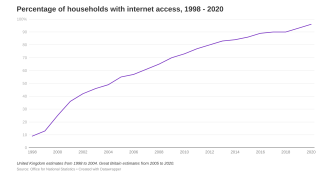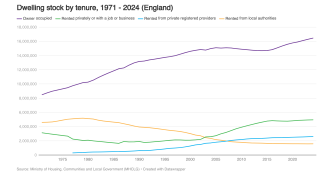Source: Department for Transport – National Travel Survey
Notes:
- The chart shows the percentage of households with either no car/van, one car/van and two or more cars/vans at timepoints from 1951 through to 2023.
- Figures from 1985/86 are from the National Travel Survey. Earlier years are derived from other household surveys.
- Figures prior to 1989 refer to Great Britain. Figures from 1989 onwards refer to England only.
- Figures prior to 1995 are based on unweighted data.
- Due to changes in the methodology of data collection, changes in travel behaviour and a reduction of data collected during 2020, 2021 and 2022, as a result of the coronavirus (COVID-19) pandemic, care should be taken when interpreting this data and comparing to other years, due to the small sample sizes.
- From January 2023 the number of households invited to take part in the National Travel Survey was increased, resulting in an increase to the sample size.
About CLOSER
This page is part of Our Changing Society, a free resource developed by CLOSER to provide detailed information about the historical and political backdrop to study participants’ lives.
CLOSER’s mission is to increase the visibility, use and impact of longitudinal population studies, data and research to ensure that longitudinal evidence is used to address the health, social, economic and environmental challenges facing the UK, now and in the future.
Want to know more?
- Longitudinal News – Sign up to our monthly newsletter to hear about the latest news, blogs, research and events from the longitudinal community.
- Learning Hub – Find information and resources to help you better understand longitudinal population studies and how to use the data.
- CLOSER Discovery – Search and explore data in the UK’s most detailed research tool for longitudinal population studies.


